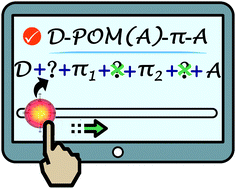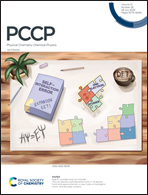Configuration effect in polyoxometalate-based dyes on the performance of DSSCs: an insight from a theoretical perspective†
Abstract
The electronic properties of dyes can be readily tuned by modifying the structure. Herein, the polyoxometalate (POM)-based dyes derived from dye XW11 with new patterns, donor–acceptor–π linker–acceptor (D–A–π–A) structure (dye 1), and D–π–A–π–A structure (dye 2) were designed by inserting a POM moiety besides the extensively exploited D–π–A structure (dye 3). Based on density functional theory (DFT) and time-dependent DFT (TD-DFT) calculations, the configuration effect on the designed dyes was investigated. The results indicate that dye 3 possesses the largest short-circuit photocurrent density JSC due to the red-shifted absorption spectra, superior intramolecular charge transfer (ICT) parameters and the largest electron injection efficiency. At the same time, dye 1 with a D–A–π–A structure not only benefits the conduction band energy shift, but also retards the charge recombination and dye aggregation effect, which is beneficial for open-circuit photovoltage VOC. Moreover, the dynamics analysis of interfacial electron transfer shows that the electrons in dye 1 are almost completely injected after 14 fs, while it takes a long time for dyes 2 and 3. The present work is expected to establish a structure–property relationship for future dye design.



 Please wait while we load your content...
Please wait while we load your content...